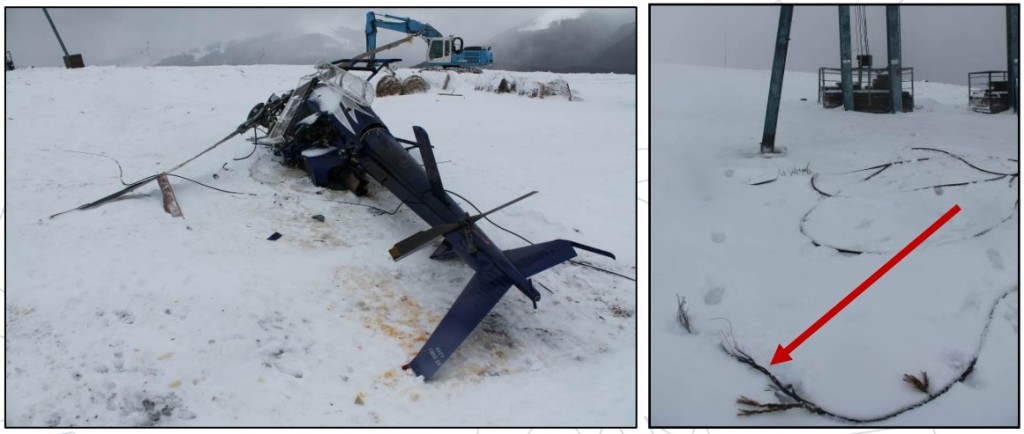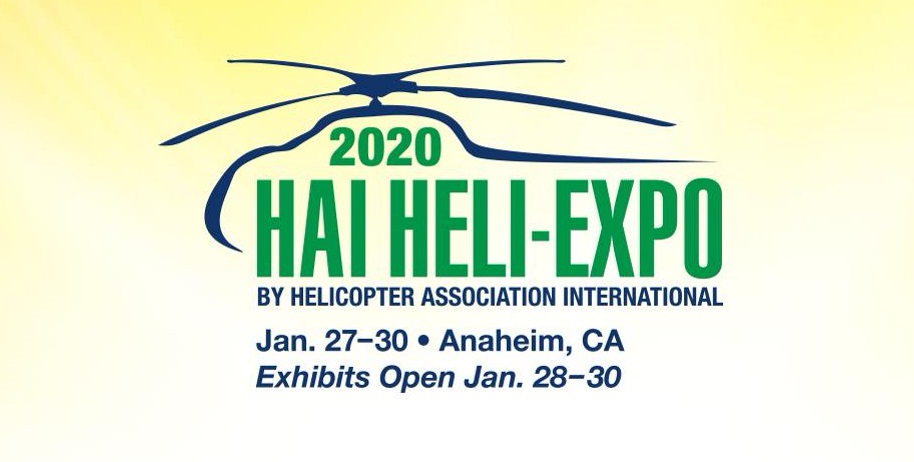Be Careful If You Step Outside!: Unoccupied Rotors Running AS350B3 YR-DEX Takes Off
The Romanian Civil Aviation Safety Investigation and Analysis Authority (AIAS) has issued their safety investigation report into an accident involving Airbus Helicopters AS350B3 YR-DEX on 29 November 2017. The aircraft, operated by Dunca Expeditii, had landed near an inoperative chairlift on a ski slope in the Mount Mic Tourist Complex, Caras-Severin County.
AIAS explain that:
After the helicopter was landed and the engine was stopped, the pilot placed some materials in two of the three cargo compartments of the helicopter and got into the cockpit with the intention to take off. After starting the engine, he put the twist grip into the “FLIGHT” position, at which time he noticed on the warning panel that the “DOOR” indication light was activated.
At this point, without securing the collective lever, with friction applied to the cyclic and with the twist grip in “FLIGHT” position, the pilot got off to check the cargo compartment doors, starting from the right side.
When he came to check the cargo compartment door on the left, the wind increased in intensity, at which point the helicopter took-off forward and banked to the right with an angle of approximately 20 degrees. This diagonal, height gaining lift-off resulted in the impact of the main rotor blades with the chairlift cable, at a distance of approximately 37 meters and at a height above the ground about 5 meters from the pilot’s take-off point in the direction of flight.
Dunca Expeditii Airbus Helicopters AS350B3 YR-DEX Wreckage and Severed Chairlift Cable (Credit: AIAS Romania)
The helicopter impacted the ground on its left side, with the tail boom detaching about three quarters of the circumference, the helicopter canopy being destroyed.
It appears the pilot was uninjured.
Previous Accidents
AIAS list various accidents involving rotors running AS350s:
- AS350B2 SN2684 F-OGUZ Guyana 17/07/2000 (no other details available)
- AS350B3 SN3209 HB-ZBN Switzerland 09/10/2001 (head injury after the pilot disemarked)
- AS350B2 SN2345 OE-XRR Austria 01/09/2009 (rolled over)
- AS350B2 SN4419 ZK-IMS New Zealand 06/05/2010 (rolled over while pilot checking baggage bay)
- AS350BA SN2473 ZK-HBD New Zealand 23/09/2010 (rolled over while pilot arranging load)
- AS350BA SN1132 ZK-HKU New Zealand 09/08/2012 (not relevant as accident happened after the subsequent departure: Regulator Missed the Chance to Intervene Before Fatal Tour Accident say TAIC)
- AS350B3e SN7718 N840PA USA 18/05/2014 (rolled over onto pilot as he was relieving himself)
AIAS Safety Analysis
The Investigation Commission tried to determine the helicopter dynamics taking into account the pilot’s statement, namely:
- The pilot outside the helicopter, on the left-hand side
- The twist grip on the collective in the “FLIGHT” position
- The collective not secured
- Friction applied to the cyclic.
When friction is not applied to the collective and this is not secured, due to engine helicopter vibrations, the collective can change its position. The result is the change of the main rotor blades pitch and the increase of the load, thus the helicopter is lifting off. If the position of the cyclic is not altered from the one that it has on the ground, during the lifting from the ground, the helicopter will tend to move in the direction of its position. Also, if the right pedal is not actuated to counteract the reactive torque of the main rotor, the helicopter will rotate about its vertical axis to the left.
In conclusion, in the case of an uncommand lift off, the helicopter dynamics would be the following: the collective rises slightly, the main rotor blades pitch changes, the rotor produces a load, the helicopter partially lifts off, inclined to the position of the cyclic and rotates about its vertical axis to the left due to the increase in the reactive torque of the main rotor, the result will be the aircraft turn/roll over.
After contacting the blades with the [chairlift] installation cables, the helicopter impacted the ground with the nose lower left side, then resting on its left side. The Investigation Commission could not determine accurately the flight phase in which the main rotor blades touched with the cables of the chairlift installation.
Safety Actions
On 14 December 2014, Airbus Helicopters issued the Safety Information Notice 2727-S-00 “Operational Conditions – Dangers Associated with Operating a Helicopter on the Ground Without a Qualified Pilot at the Controls”.
An earlier notice was issued in 2006 at which time the manufacturer decided to amend their Flight Manuals to add a note stating that the pilot must not leave the aircraft with the rotors running. This change had been made for the EC120, EC130 and some AS350 variants.
Airbus also released the SIN 3268-S-00 on 15 November 2018 about unintentional lift-off events without control inputs by the pilot.
Our Comment
Leaving a rotors running helicopter unoccupied, relying on collective friction and a steady wind, might just be a bigger risk than the flight itself…
Other Safety Resources
- US HEMS EC135P1 Dual Engine Failure: 7 July 2018 – another case of variant confusion
- EC135P2+ Loss of NR Control During N2 Adjustment Flight
- EC135P2 Spatial Disorientation Accident
- Misassembled Anti-Torque Pedals Cause EC135P1 Accident
- AAIB Report on Glasgow Police EC135T2+ Clutha Helicopter Accident
- Maintenance Misdiagnosis Precursor to EC135T2 Tail Rotor Control Failure
- Accident Report: Fatal Police Helicopter Double Engine Flameout Over City Centre
- US Police Helicopter Night CFIT: Is Your Journey Really Necessary?
- HEMS S-76C Night Approach LOC-I Incident
- AS350 Tail Rotor Control Incident, Grand Caymen
- Austrian Police EC135P2+ Impacted Glassy Lake
- Dim, Negative Transfer Double Flameout
- BK117B2 Air Ambulance Flameout: Fuel Transfer Pumps OFF, Caution Lights Invisible in NVG Modified Cockpit
- EC130B4 Destroyed After Ice Ingestion – Engine Intake Left Uncovered
- US Fatal Night HEMS Accident: Self-Induced Pressure & Inadequate Oversight
- Firefighting Helicopter Wire Strike
- Wayward Window: Fatal Loss of a Fire-Fighting Helicopter in NZ
- Helicopter Tail Rotor Strike from Firefighting Bucket
- When Habits Kill – Canadian MD500 Accident
- HF Lessons from an AS365N3+ Gear Up Landing
- UPDATE 25 April 2020: Fatal R44 Loss of Control Accident: Overweight and Out of Balance
- UPDATE 16 May 2020: AS350B3 Dynamic Rollover When Headset Cord Snags Unguarded Collective
- UPDATE 16 May 2020: AS350B3 Rolls Over: Pilot Caught Out By Engine Control Differences
- UPDATE 27 December 2020: Fire-Fighting AS350 Hydraulics Accident: Dormant Miswiring
- UPDATE 16 July 2022: Distracted Dynamic Rollover
On error management:
…and our review of The Field Guide to Understanding Human Error by Sidney Dekker presented to the Royal Aeronautical Society (RAeS): The Field Guide to Understanding Human Error – A Review
Aerossurance will be at HeliExpo 2020 in Anaheim, CA:






Recent Comments